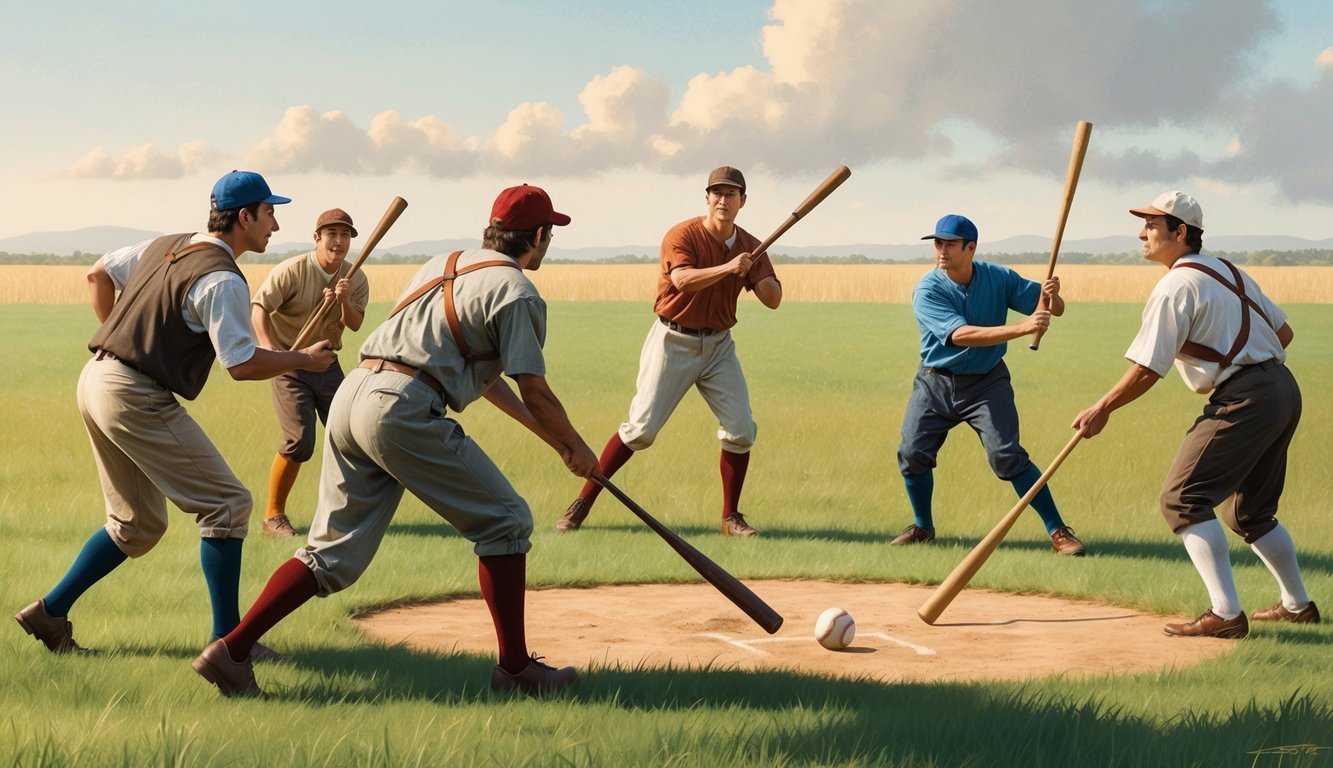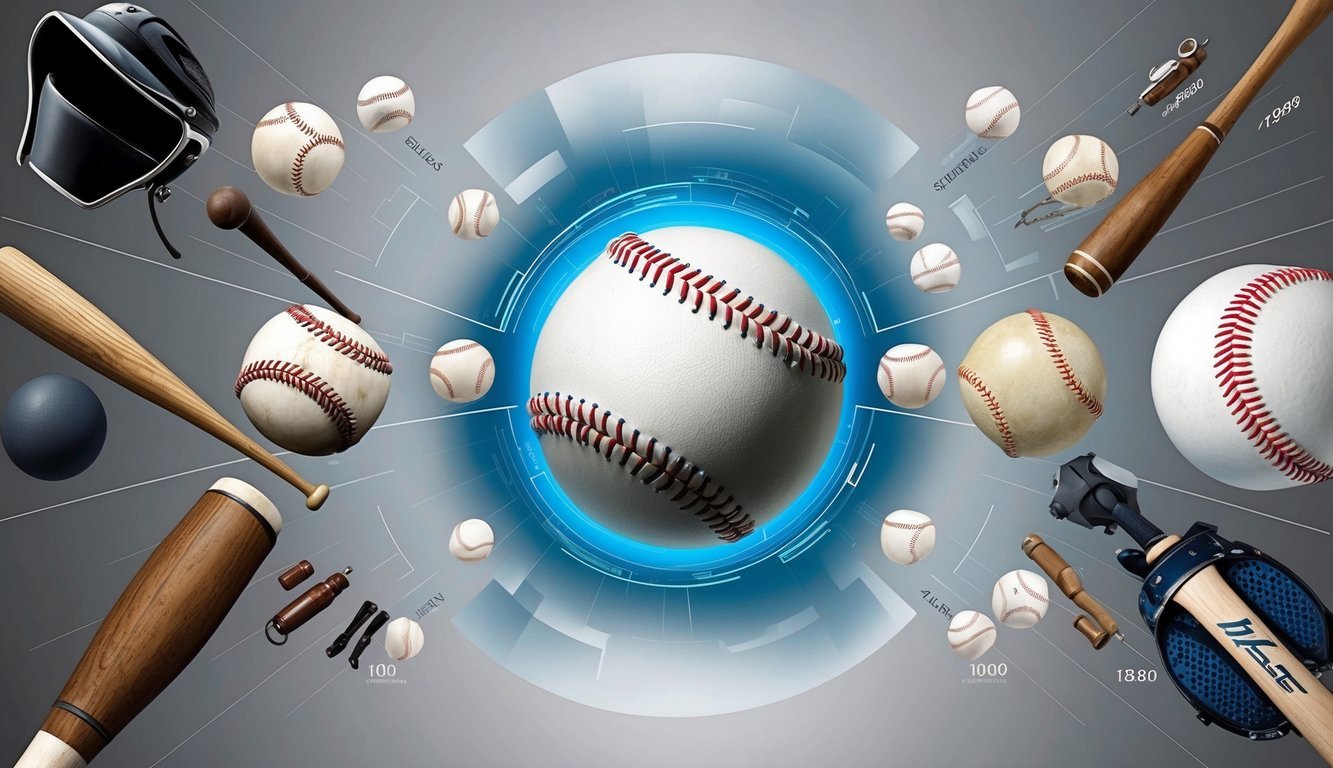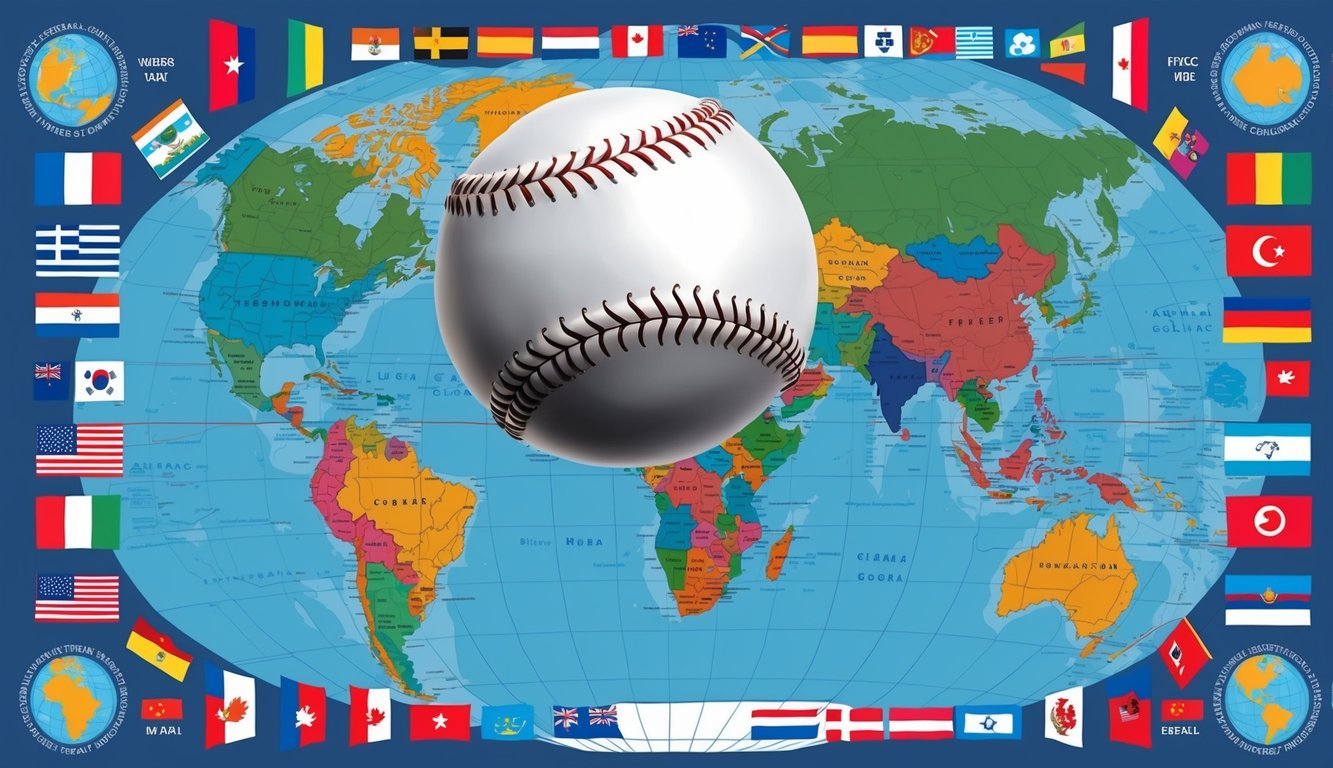Baseball’s journey from a simple bat-and-ball game to America’s national pastime is a fascinating tale of evolution and innovation.
Rooted in early English games, baseball took shape in the mid-19th century when Alexander Cartwright formalized its rules.
The year 1876 marked a pivotal moment with the establishment of the National League of Professional Baseball Clubs and the standardization of rules and equipment.
As baseball grew in popularity, it became deeply intertwined with American culture.
The sport’s ability to adapt and reinvent itself while maintaining its core essence has been key to its enduring appeal.
From the Knickerbocker Rules to modern high-tech stadiums, baseball has continually evolved, reflecting the changing times and captivating generations of fans.
Origins and Early History

Baseball’s roots trace back to 18th century England, evolving from earlier bat-and-ball games.
The sport underwent significant transformations as it crossed the Atlantic, taking on a distinctly American character.
From England to America
Baseball emerged from English games like rounders and cricket.
British colonists brought these pastimes to North America, where they gradually morphed into a new sport.
By the early 19th century, variations of “base ball” were being played in towns across the young United States.
New York City became a hub for the game’s development.
Local clubs formed, each with their own set of rules.
The sport’s popularity grew rapidly, spreading to other regions.
The Creation of Modern Baseball
In 1845, Alexander Cartwright and the New York Knickerbockers made a crucial contribution.
They codified the “Knickerbocker Rules,” which laid the foundation for modern baseball.
These rules introduced concepts like foul territory and eliminated the practice of throwing balls at runners to get them out.
The National Association of Base Ball Players formed in 1857, further standardizing the game.
Despite popular myths, Abner Doubleday didn’t invent baseball in Cooperstown.
However, the town later became home to the Baseball Hall of Fame.
By the 1860s, baseball had earned the title of “America’s National Pastime.” The sport continued to evolve, with professional leagues emerging and rules being refined.
Professional Baseball and Its Development
The transition from amateur to professional baseball marked a pivotal moment in the sport’s history.
This shift led to the creation of organized leagues and the establishment of baseball as a commercial enterprise.
The First Professional Teams
The Cincinnati Red Stockings became the first fully professional baseball team in 1869.
They toured the country, playing against both amateur and semi-professional clubs.
Their success inspired other teams to follow suit.
In 1871, the National Association of Professional Base Ball Players formed.
This league included teams from major cities across the Northeast and Midwest.
It operated for five seasons, paving the way for more structured professional leagues.
The Red Stockings’ approach to player contracts and team management set a precedent for future professional teams.
They offered salaries, travel expenses, and other perks to attract top talent.
Formation of Major Leagues
The National League of Professional Baseball Clubs, founded in 1876, brought stability to professional baseball.
It established standardized rules and regulations for member teams.
The American Association emerged as a rival league in 1882.
It offered cheaper tickets and allowed alcohol sales at games, attracting a different fan base.
In 1901, the American League declared itself a major league.
This move sparked competition with the National League for players and fan attention.
The two leagues eventually reached an agreement, leading to the first World Series in 1903.
This event solidified Major League Baseball’s position as the pinnacle of professional baseball in the United States.
Iconic Players and Cultural Impact
Baseball’s greatest stars shaped the game and society.
Their achievements on and off the field left lasting legacies that transformed America’s national pastime.
From Babe Ruth’s incredible home run records to Jackie Robinson’s groundbreaking role in desegregating the sport, these athletes became icons who inspired countless individuals.
Their contributions extended beyond the diamond, influencing social change and community engagement.
For those looking to understand the sport, it’s essential to master baseball fundamentals for beginners, as these foundational skills not only enhance gameplay but also pay homage to the rich history of the game.
Babe Ruth and the Rise of Home Run
Babe Ruth revolutionized baseball in the 1920s.
His powerful swing and charismatic personality captivated fans across the United States.
Ruth’s prodigious home runs changed how the game was played and viewed.
He set records that stood for decades, including 714 career home runs.
Ruth’s larger-than-life persona made him America’s first sports superstar.
His popularity helped baseball recover from the 1919 Black Sox scandal.
Ruth’s impact extended beyond the diamond.
He became a cultural icon, appearing in movies and advertisements.
His rags-to-riches story embodied the American Dream for many.
Jackie Robinson and the Color Barrier
Jackie Robinson broke baseball’s color barrier in 1947.
His courage and skill paved the way for integration in America’s favorite sport.
Robinson faced intense racism and threats but persevered with dignity.
His success opened doors for other Black players like Hank Aaron and Willie Mays.
Robinson’s impact reached far beyond baseball, advancing civil rights in the United States.
After retiring, Robinson continued to fight for equality.
He became a prominent voice in the civil rights movement.
Robinson’s number 42 is retired across all MLB teams, honoring his lasting legacy.
Evolving Game Mechanics

Baseball has undergone significant changes in its rules and strategies over the years.
These adjustments have shaped how the game is played and managed today.
Rule Changes and Strategy
The introduction of overhand pitching in the 1880s revolutionized baseball.
This shift transformed the sport from a hitter-dominated game to one where pitching became central.
Pitchers developed new techniques and grips to throw more effectively.
The curveball emerged as a game-changing pitch, giving hurlers an edge over batters.
As pitching evolved, so did offensive strategies.
Managers began to focus more on small-ball tactics like bunting and hit-and-run plays.
This led to a more strategic approach to scoring runs.
Rule changes also impacted game dynamics.
The introduction of the foul strike rule in 1901 gave pitchers another advantage.
It counted foul balls as strikes, making it harder for batters to extend at-bats.
Designated Hitter and Modern Roles
The designated hitter (DH) rule, adopted by the American League in 1973, significantly altered lineup construction.
It allowed teams to use a specialized hitter in place of the pitcher, boosting offensive production.
This change created new roles and strategies.
Teams could now employ power hitters who might be defensive liabilities as full-time DHs.
It also allowed pitchers to focus solely on their mound duties.
The DH rule sparked debates about strategy and tradition.
National League teams had to adjust when playing in AL parks, often using bench players in unfamiliar roles.
Modern baseball has seen further specialization of player roles.
Closers, set-up men, and lefty specialists have become crucial parts of pitching staffs.
On offense, platoon systems and pinch-hitting specialists are now common strategies.
Globalization and the Expansion of Baseball

Baseball’s reach has extended far beyond American borders.
The sport now thrives in many countries, with international leagues and events showcasing global talent.
International Leagues and Players
Major League Baseball (MLB) has seen a surge in international players.
Stars from Japan, the Dominican Republic, Puerto Rico, Cuba, and Canada have made their mark.
Japanese slugger Ichiro Suzuki and Dominican pitcher Pedro Martinez became household names in the U.S.
Many countries have developed their own professional leagues.
Japan’s Nippon Professional Baseball is highly respected.
The Korean Baseball Organization has gained popularity.
The Mexican League attracts talent from across Latin America.
MLB teams now scout globally.
They’ve established baseball academies in the Dominican Republic and other countries.
These academies nurture young talent and provide educational opportunities.
World Baseball Classic and International Events
The World Baseball Classic, launched in 2006, is now a premier international tournament.
It features teams from 16 countries competing every four years.
The event showcases national pride and baseball prowess on a global stage.
Japan has won the tournament twice, while the Dominican Republic and United States have each claimed victory once.
The Classic has helped spread baseball’s popularity to new markets.
Other international events include the Olympics and the Premier12 tournament.
These competitions give players from various countries a chance to shine.
They also foster cultural exchange through sport.
MLB has organized regular-season games in countries like Japan, Australia, and England.
These games help promote the sport and engage international fans.
